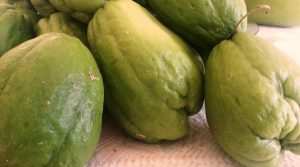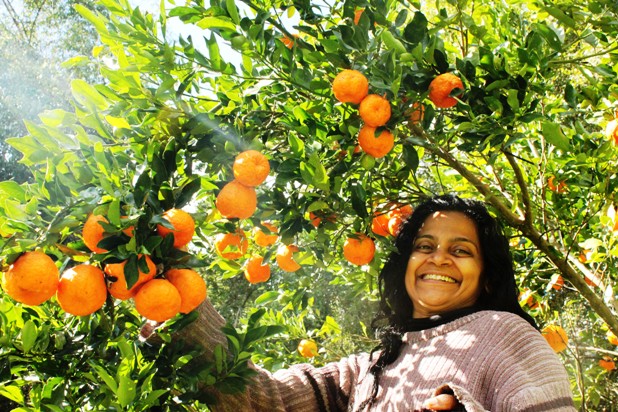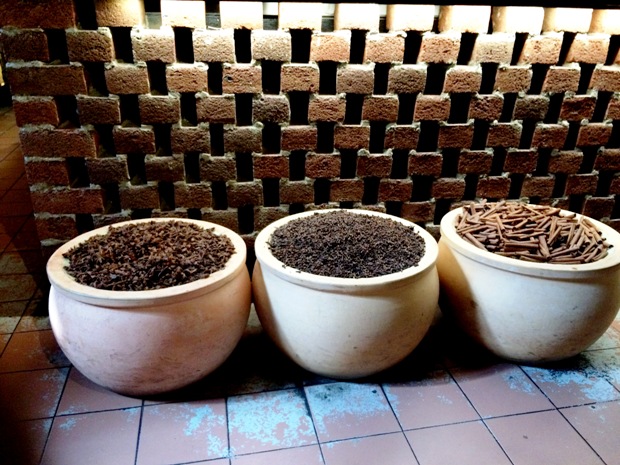My husband, Kevin, came home from work one day with a large bag full of chokos. He asked me if I had ever seen this fruit. No. Never. I was intrigued. It resembled the guava fruit from Malaysia that I was familiar with.
A lady working at his client’s office had an abundant crop and decided to give some to Kevin.
“She had given away bags and bags to every single person in the office and had run out of people to give them to. So she gave them to me,” said Kevin with a grin.
“But what are they?” I asked apprehensively.
“It’s called the poor man’s food. Pop [Kevin’s grandfather] used to eat it all the time during the Depression. His family cooked it in so many different ways so they wouldn’t grow tired of it.”
I showed the chokos to our daughter and asked her if she had ever seen chokos and she said “No.”
This food which had been the staple diet and probably saved the lives of many families during the Depression is all but forgotten today. Chokos are considered a vegetable and this name is unique in Australia because it is normally known as Chayote.
The reason so many families relied on it then was that it is a vigorous grower and needs very little attention. They produce in abundance and as one person who lived through the Depression put it, “one choko tree can feed a small town”. They are also rich in amino acids and vitamin C. They grow on vines that can reach up to 10 metres and some people today use it as a shade crop for their chicken coop, shed or verandah without much interest in the vegetable itself.
An interesting advert from Women’s Weekly 26 May 1934
Of course this article pinned was two years after the Great Depression and you will find the recipe here is a little more exciting than the plain boiled chokos gracing the dinner tables of those many poor families.
I daresay I put my lot to good use through juicing and making a delicious choko pie. As the choko has the unique quality of absorbing the taste of whatever it is cooked with it is said the poor who could not afford apples or pears would use a trick where they would stew a few apples with a larger ratio of chokos and the chokos would take on the apple flavour. Apparently you could not tell the difference.
As for my personal experience I found it to be mildly sweet after steaming. So I did not need much sugar. When cut the light green custard-like filling oozed out of the choko pie from under a pile of mixed nuts. Check out this simple and delicious recipe for Choko Pie
You can’t buy chokos in stores these days but rather from people growing them in their backyards.





2 Comments
ig · February 20, 2016 at 5:14 am
Aw, this was an extremely good post. Taking the time
and actual effort to create a great article… but
what can I say… I procrastinate a whole lot and never manage to get anything done.
FannyWWarman · March 10, 2016 at 9:08 pm
Good blog post. I definitely love this amazing site.
Stick with it!